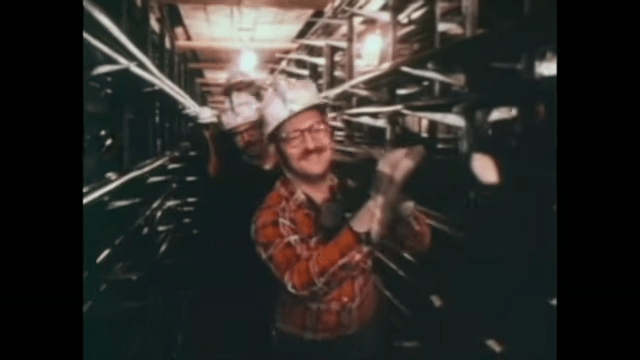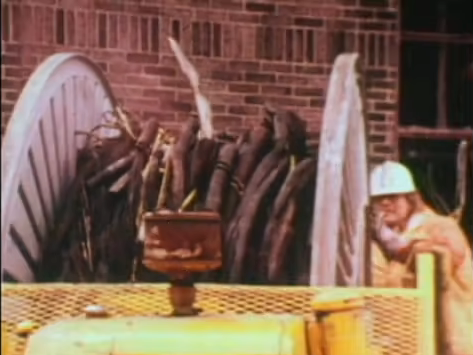
Those who haven’t experienced the destruction of a house fire should consider themselves lucky. The speed with which fire can erase a lifetime of work — or a life, for that matter — is stunning. And the disruption a fire causes for survivors, who often escape the blaze with only the clothes on their backs, is almost unfathomable. To face the task of rebuilding a life with just a few smoke-damaged and waterlogged possessions while wearing only pajamas and slippers is a devastating proposition.
As bad as a residential fire may be, though, its impact is mercifully limited to the occupants. Infrastructure fires are another thing entirely; the disruption they cause is often felt far beyond the building or facility involved. The film below documents a perfect example of this: the 1975 New York Telephone Exchange fire, which swept through the company’s central office facility at the corner of 2nd Avenue and 13th Street in Manhattan and cut off service to 300 blocks of the East Village and Lower East Side neighborhoods.
The fire, which started due to a short circuit in one of the basement cable vaults during the graveyard shift on February 27th and spread rapidly up through cable chases into the rest of the building, eventually escalated to five alarms and involved more than 700 FDNY firefighters. It took more than 16 hours to extinguish the blaze, which belched black smoke as miles of PVC-insulated cable burned to cinders.

Before the toxic smoke even cleared, New York Telephone’s rebuilding efforts were underway. Job one was to assess the damage, and the picture was grim: all the switching equipment on the second and third floors of the building was destroyed, smoke and water vapor damaged equipment all the way up the eleven-story building, and most of the 2,400-pair vault cables entering the building’s basement were melted to slag. With over 170,000 customers deprived of their only means of communication, NYTel engineers and managers had to figure out how to restore service as rapidly as possible.
Sensing the historic nature of this disaster — it would remain the most destructive and disruptive event in Bell System history until the 9/11 attacks — AT&T dispatched a film crew to document the recovery. The film may feel a little self-congratulatory, but considering the enormity of the problems they had to overcome, the praise and plaudits are well-deserved. Five thousand employees from all over the Bell System converged on lower Manhattan to strip out the destroyed equipment, clean and repair the building, and begin rebuilding the exchange from scratch. Supplies and gear were diverted from all over the country to aid the effort; in a notably lucky break, a main distribution frame destined for another office was pulled from a Western Electric loading dock, shipped to NYC, and installed in only four days, instead of the six months a job like that would normally take.
Thanks to the massive mobilization, what came to be known as “The Miracle on 2nd Avenue” restored service to all customers in a mere 23 days. That success came at a very high price, though; even though no lives were lost in the fire, over 300 firefighters were injured during the response. But that was only a shadow of things to come — thanks to the toxic smoke from all that burning PVC, over forty cases of cancer cropped up in first responders over the ensuing decades. If you ever wondered why building codes specify “plenum-rated” cables for certain locations, it’s at least partly thanks to the lessons learned from this fire, and the health consequences suffered by those who set it all to rights.
We got wind of this one through an [Anonymous] tip. Thanks!
Retrotechtacular: Rebuilding a Fire-Ravaged Telephone Exchange
Source: Manila Flash Report
0 Comments